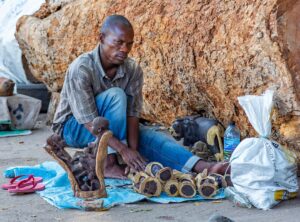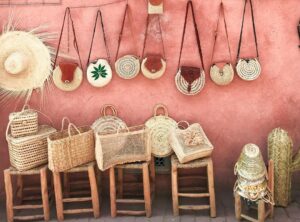The exploration of Africa began 600 years before Christ, when the ancient Egyptians marched to its eastern countries. In general, we owe all the information about Africa up to the end of the fourteenth century to Arab historical sources. It was the Egyptians who traveled south across the Red Sea to the country of Punt (modern Somalia) for incense, ivory, and rare animal skins.
The Arab scientist Abu-l-Fida (thirteenth century) made the first astronomical determinations of the geographical location of Africa, Ibn Batuta reached the shores of Zanzibar via Sudan in his travels (fourteenth century), and the African Lion traveled to Africa in the fourteenth century.
As a result of the Roman campaigns, the western shores of Africa were discovered, and the true outlines of this region were clearly outlined with the discovery of the Cape Verde (1416) and the Gulf of Guinea (1471) by the Portuguese. In 1498, Vasco da Gama rounded the Cape of Good Hope and headed for India.
Following the Portuguese, the Dutch, English, and Danes began to discover the coastline and territory of Africa.
In 1788, the African Society was founded in London to explore Africa. Five years later, similar societies were formed in Germany, then in Belgium, Italy, and Malta.
African art is understood as the art of tribes and nationalities of Tropical (Black) Africa. Until the 19th century, this art was viewed from the point of view of ethnic value and was classified as “naive” (“primitive”) art.
The wave of avant-garde art in the 20s of the twentieth century brought a new perspective on cult sculpture.
Since then, African art has been perceived exclusively from an aesthetic point of view.
Before the discovery of Africa, its peoples developed in isolation. However, the local primitive cultures (the first stage of cultural development, the early period of art evolution) testify to the diversity and richness of the artistic abilities of the population. Living in huts, their inhabitants imaginatively made everything necessary for the home, such as furniture, which attracts attention with its craftsmanship. Made of wood, these products demonstrate the developed sense of form in their creators (they impress not only with their decorative design but also with their comfort). The supports of furniture for sitting were usually made in the form of human or animal figures.
Tables, chests and other objects are richly ornamented. Unfortunately, the name of the artist almost always remained unknown. However, several names have come down to us. Among them is Sultan Njoya, the creator of writing and patron of the arts. The masks and furniture created at his court were known throughout Africa, and their creators often became leaders in their villages.
North Africa is of particular interest for the development of art in this region: Algeria, Tunisia, Morocco (Maghreb countries), and Libya. Neither Greece nor Italy have Roman cities that are as well preserved as Lepti-Magna and Sabratha in Libya, Douga in Tunisia, and Timgad in Azhir. The magnificent works of art found during the excavations – mosaic statues – adorn the museums of the capitals of these countries.
The true capital of North Africa, Carthage sought to resemble Rome in everything. That is why its theater, amphitheater, and circus were huge monumental structures decorated with columns and statues. It was in the theater of Carthage that Apuleius, a famous writer of the second century, delivered his speeches.
Gladiatorial fights took place in the amphitheater, and horse races on chariots and on horseback took place in the circus. The circus was built on the slopes of a hill, where seats for spectators were arranged. The racetrack had the shape of an elongated rectangular field.
In Carthage, there was also an odeon, an indoor space for musical performances and competitions. Its walls were lined with colorful marble, and statues stood in niches.
In the center of Carthage and other cities of North Africa, there was a forum, a square for citizens to gather. The forum was surrounded by columns. The Capitol, the upper temple, which was located on the highest point in the city, was obligatory.
The cities were decorated with arches that were built in honor of some important event or deity, emperor or noble person.


